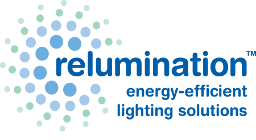You’ve probably been sunburned at some point in your life because of staying out in the sun too long. This is caused by ultra violet (UV) radiation, which is invisible to the human eye yet can damage the skin and eyes. However, the damaging effects of UV aren’t limited to human tissue. UV also fades and degrades plastics and fabrics.
UV fades dyes, paint, and breaks down many types of plastics such as vinyl, nylon, polypropylene, PVC, polycarbonate, and polystyrene. It even degrades tire rubber, which is one of the reasons why it’s commonly recommended to never use tires older than 6 years.
What does this have to do with retail lighting? Lights commonly used in retail such as CFL and fluorescent lighting emit UV radiation. This is why museums that display art, photography, and other objects take great care in not exposing their displays to UV. As a retailer, many of your goods are affected by UV. UV will fade any of your products that have dyes. Clothing is certainly in this category. In fact, UV also breaks down the synthetic fabrics commonly used in clothing. For example, polypropylene is used in outdoors clothing and is degraded by UV.
Even furniture isn’t immune, because UV degrades wood stains and coatings. Embroideries, clothing, quilts, upholstery, draperies, linens, and carpets are also vulnerable. There are two forms of UV: UVA and UVB. UVB rapidly bleaches surface colors, while UVA damage takes longer to occur. However, UVA has greater penetrating power than UVB and its damaging effects penetrate more deeply into materials.
The degree of UV damage depends on its intensity and duration of exposure. Therefore, display items not intended for sale that are brightly lit with CFL or fluorescent lighting are most at risk. Even the interior decor of your store is faded by long-term exposure to CFL and fluorescent lighting. Paintings and artwork, whether for sale, or used as decor, should never be exposed to UV.
What’s the solution to this difficulty? LED lighting. LEDs don’t emit UV radiation. In fact, many museums use them for exactly this reason. In addition to this important property, LED lighting benefits businesses in other ways. It’s the most energy-efficient form of lighting, which means it will lower your electricity bill. It lasts significantly longer than other types of lighting. This means that after installing them, it will be a long wait before you’ll have to replace them. They also produce pure white light that doesn’t distort color perception, and they produce very little heat, which will reduce your AC power bills.
